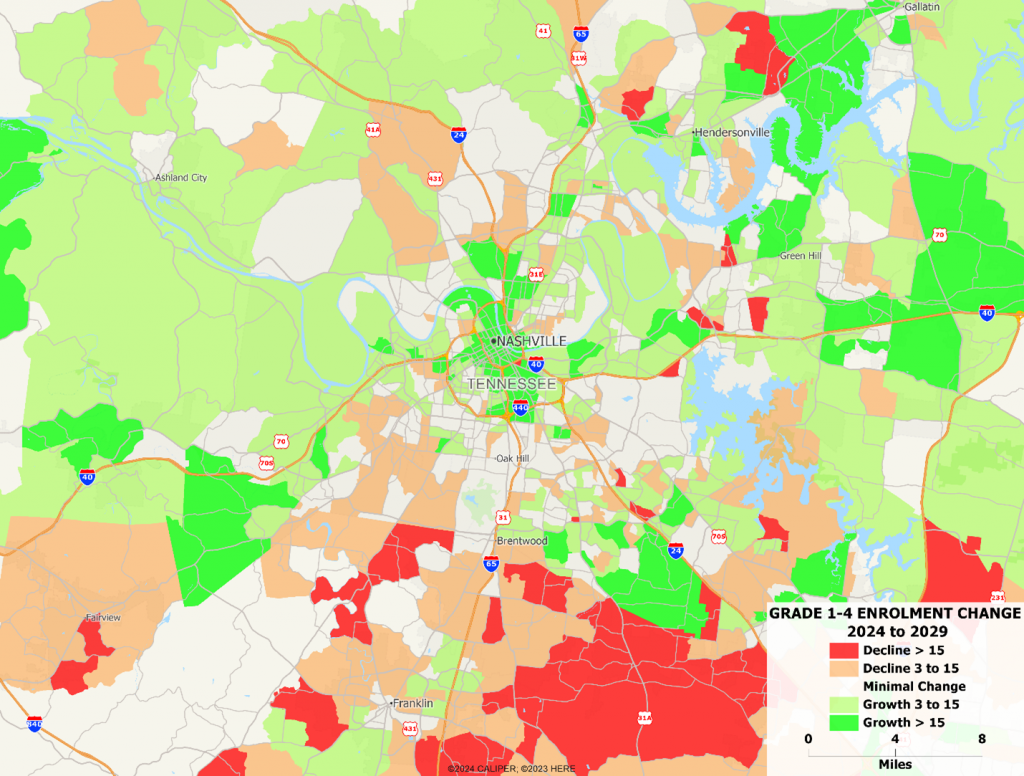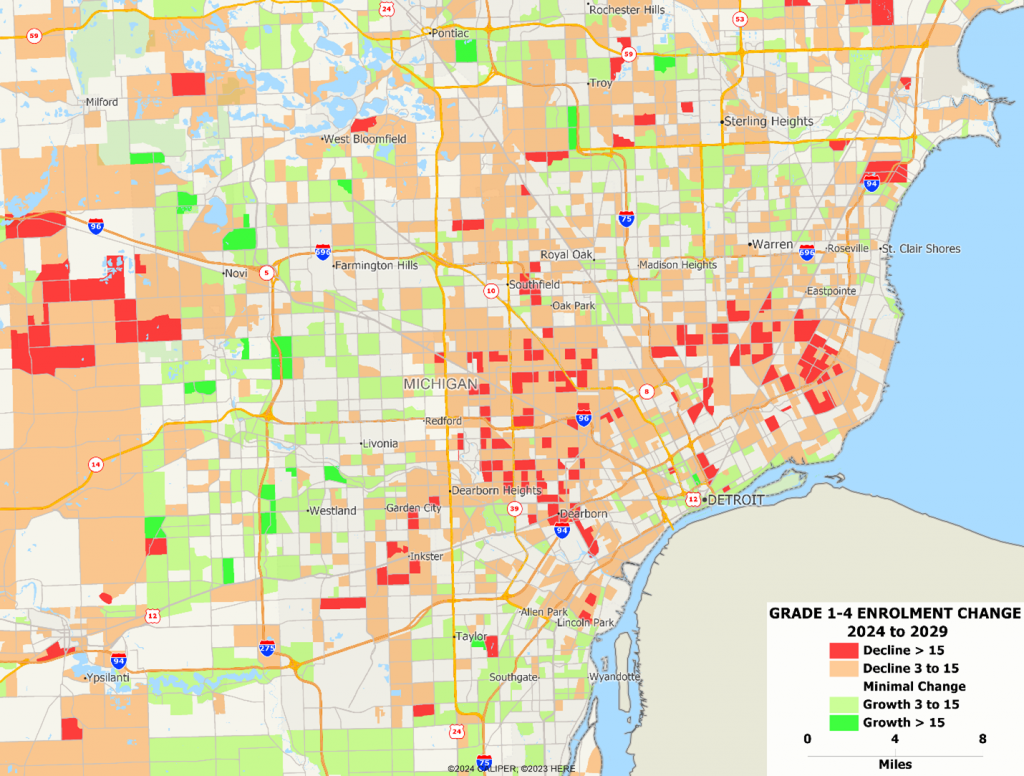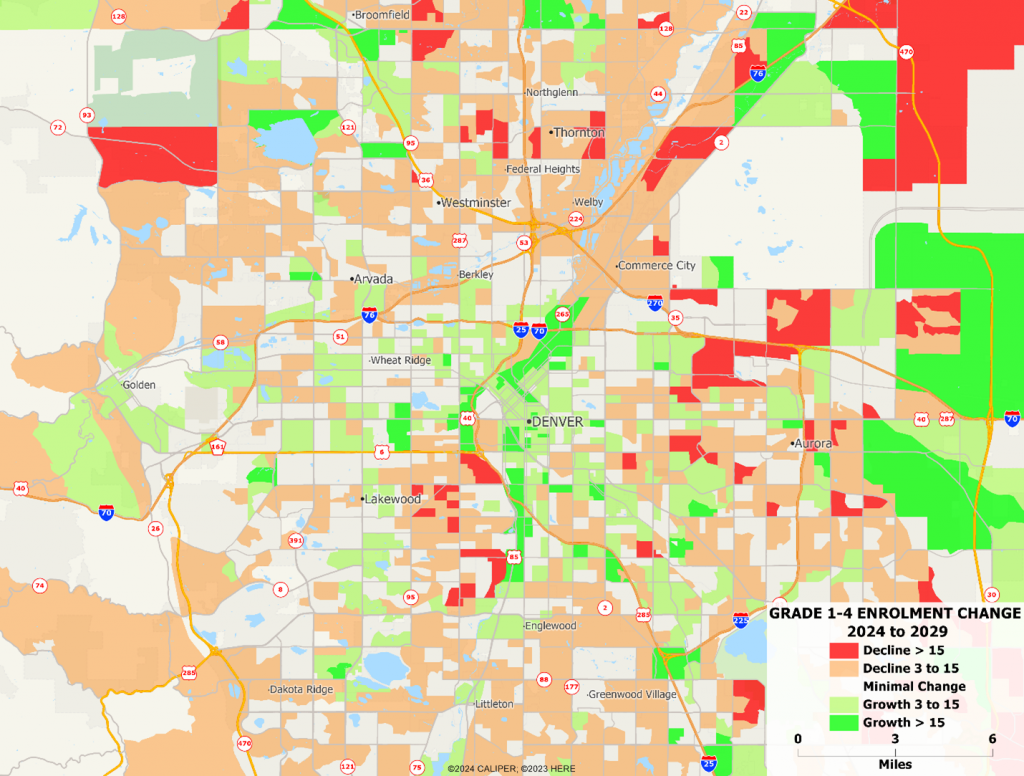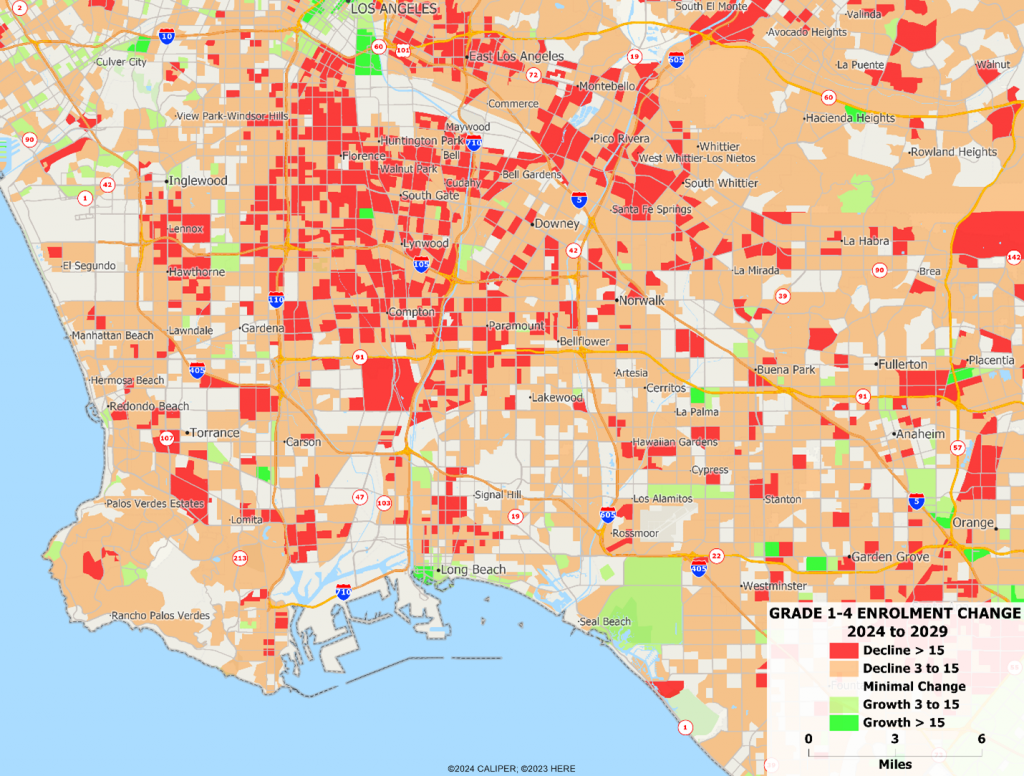As the average family size has declined over the past few decades, many school districts have been dealing with long term declines in enrollment. In the suburban developments of the 1960’s and 1970’s, many elementary schools have been closed or repurposed. Even in current growth areas, the additional student demand may be low and not require the construction of facilities which may be necessary only for a couple of decades.
For public schools, the rise of both home schooling and private school alternatives has resulted in declining enrollment even in growth areas.
One of the key problems that school districts face is allocating resources efficiently in the face of changing demographics. The COVID lockdowns did result in a slight ‘baby boom’ in 2021 and 2022, but not large enough to substantially alter the overall trends – in effect, the decline in the total number of babies born was reduced during those two years.
We mapped the change in the number of first grade to fourth grade students from the current year to 2029 at the block group level. Overall, enrollment can be expected to decline slightly, but the spatial patterns of that decline are significant:
- In metropolitan areas with declining enrollment, there will be areas where increases can be expected. Areas with new development – both suburban and redevelopment – can expect increases. School districts may be able to avoid further closures by redrafting school boundaries or by efficiently transporting students from these growth areas.
- In growing metropolitan areas, there will still be significant portions of the city where declines can be expected. The Franklin area south of Nashville is a good example – despite the growth in many parts of the city, this area has little new development that is likely to result in elementary school students.
Las Vegas, Nevada

Nashville, Tennessee

Tampa, Florida

Detriot, Michigan

Denver, Colorado

Los Angeles, California

So, what demographic data is important to consider when planning for elementary schools? School district planners should be looking at the following data points, all available at the census block level:
- Population by age and sex by individual year of age
- School enrollment by type of school (public, private) and level
- Available for current year and five-year projections
